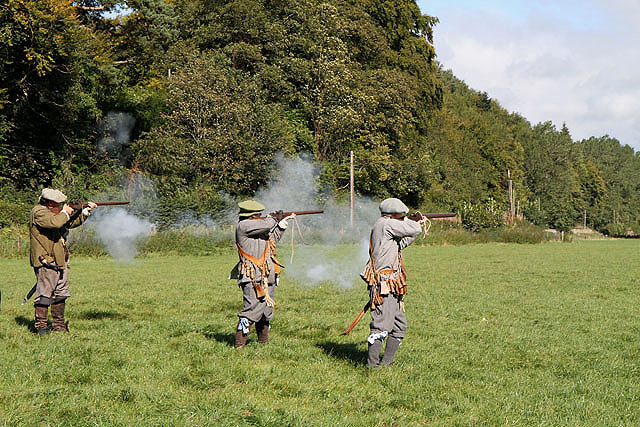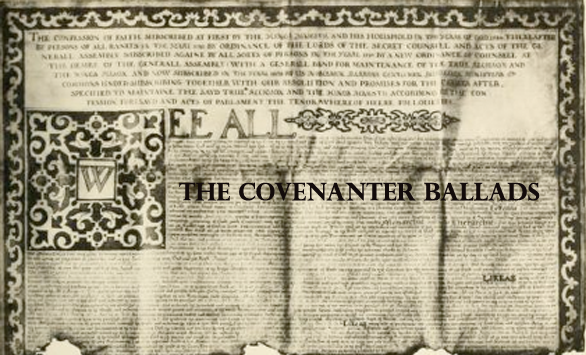The Battle of Philiphaugh
“The Battle of Philiphaugh” first appeared in the 1803 edition of The Minstrelsy of the Scottish Border, when it was published in volume III.
It is concerned with the events of the Battle of Philiphaugh, which was fought in 1645, just outside the town of Selkirk in the Scottish Borders. Scott provides extensive notes to the ballad. The ballad is a partizan account of the decisive Battle of Philiphaugh, which saw the defeat of Montrose’s army by the Covenanting force, led by lieutenant-general David Leslie.
History
The Battle of Philiphaugh was fought on 13 September 1645, and it saw the defeat of the enigmatic James Graham, Marquis of Montrose: Montrose led the Royalist forces, primarily numbering Highlanders and Irishmen. Using guerrilla tactics, Montrose’s forces had won a series of decisive victories, but at Philiphaugh, he was out-manoeuvred by David Leslie.
Montrose’s force was not a conventional army as we would recognise it today. Its numbers were frequently in a state of flux, as Montrose had accepted the natural conditions of his Highland levies. While these men were fierce in battle, their expectation was that they would plunder after an engagement and then carry their booty home. While this happened, it seems that they more often than not returned to the fray with Montrose, led by the feared Alasdair MacColla. It is without doubt that Montrose had the Highlanders’ respect. However, McColla’s priority was to recover McDonald lands from the Campbells, and early in 1645, he saw his chance. The Battle of Inverlochy was fought on 2 February 1645, after Montrose and MacColla had marched their troops – the combination of Highlanders and Irishmen – over the treacherous land between Kilcumin and Inverlochy – covering around 30 miles of vicious terrain in less than 36 hours.
The flanks of the opposing army was made up of regulars from the Covenanting army, and they broke under the strategy of the Irish, who withstood the firepower of the Covenanters, delivered one volley and then charged. There were around 1000 Campbell levies, along with 500 men of the Campbell Duke of Argyll’s own regiment in the centre of the force opposing MacColla’s Highlanders. A troop of horse, led by Sir Thomas Ogilvy, cut off the Campbells' retreat and they were cut to pieces by the vengeful Highlanders.
Montrose and his men may have won the Battle of Inverlochy, but he lost the Highland contingent of his force from that time, as MacColla insisted on remaining in the area, although the news of the battle did bring in some new recruits for Montrose.
Montrose began the journey south, with the intention of joining with his monarch’s army in England. However, by the time he had marched down to Philiphaugh, he lad learned that lieutenant-general David Leslie was marching north. It would seem that Montrose’s intent was to escape into the Border hills and meet Leslie’s force on his own terms, no doubt intending to operate the same type of guerilla tactics which had served him well time and time before.
 Leslie, however, was closer than Montrose knew. On the night of the 12th September 1645, Montrose and most of his officers were billeted in the town of Selkirk, with his cavalry camping on the plain of Philiphaugh, which, importantly, was over the river from the town, and his Irish infantry camped in the woods nearby. When Leslie’s Covenanting force attacked on the morning of the 13th September, there were minimal officers present to muster the cavalry and infantrymen. The Irish dug in and fought on, while part of their cavalry support tried in vain to engage the enemy and then fled.
Leslie, however, was closer than Montrose knew. On the night of the 12th September 1645, Montrose and most of his officers were billeted in the town of Selkirk, with his cavalry camping on the plain of Philiphaugh, which, importantly, was over the river from the town, and his Irish infantry camped in the woods nearby. When Leslie’s Covenanting force attacked on the morning of the 13th September, there were minimal officers present to muster the cavalry and infantrymen. The Irish dug in and fought on, while part of their cavalry support tried in vain to engage the enemy and then fled.
Montrose, it is said, was forced to quit the field and flee. The Irish finally had to surrender, with the promise of quarter being given. However, on their surrender, Leslie declared that quarter would only be given to the officers. The remains of the infantry force, plus the camp followers (the women and children) were murdered. While this seems an act of barbarism, it was lawful – insofar as the fighting troops were concerned. The Irish colonels Thomas Laghtnan and Manus O’Cahan, who managed to organise and deploy their troops at Philiphaugh, were taken and hanged in Edinburgh.
Scott makes several pertinent points regarding the hours before the battle:
How it is possible that Montrose should have received no notice whatever of the march of so considerable an army, seems almost inconceivable, and proves, that the country was strongly disaffected to his cause, or person. Still more extraordinary does it appear, that, even with the advantage of a thick mist, Lesly should have, the next morning, advanced towards Montrose's encampment, without being descried by a single scout. (MSB (1803) iii: 159)
You can read more about the Philiphaugh battle-site here:
You can view a map of the battle-site here, from the Battlefieldstrust site.
You read about the details of the battle here.
The Characters
There are two characters in this ballad which can be associated with historical individuals. These are:
Lesly
General David Leslie (1601-1682)
David Leslie was on eof a number of Scottish soldiers, whoc received much of their early strategic training while in the army of Gustavus Aldophus, protestant king of Sweden. He returned to Scotland in 1640 and joined the Army of the Covenant, and fought under Cromwell at Marston Moor, taking charge when Cromwell was off the field. He is famous for receiving the captured Marquis of Montrose from Macleod of Assint.
You can read more about David Leslie here
(this site operates on subscription, but is accessible through academic institutions and many public libraries)
You can also read about Sir David Leslie here.
This site is not connected to any institution or official organisation. However, it is a extremely informative hub for various aspects of the various civil wars.
Montrose
James Graham, 1st Marquis of Montrose (1612-1650)
While originally supportive of the Covenant, and a leader of the parliamentary forces, he subsequently transferred his allegiance to Charles’s cause. This seems to have been born out of a combination os concern about the radicalisation of the Covenanting cause, personal suspicions regarding his own station within that cause, and the true intentions of other Covenanting lleader, primarily that of Archibald Campbell, 1st Marquis of Argyll.
A successful commander with his Irish and Highland forces, he fought a series of guerrila-style attacks. He was defeated at Philiphaugh and went into exile. Upon Charles II’s accessions, Montrose rose to his support and returned to Scotland via Orkney.
His much reduced forces were defeated at Carbisdale in 1650, after which he was betrayed and captured. He was hanged, executed and quartered in Edinburgh.
When Charles II was restored to the throne, he declared that Montrose should be given a funeral with all honours. In keeping with this, Montrose was given a full funeral in 1661 and is buried in St Giles, Edinburgh.
You can read about Montrose here on the online Oxford Dictionary of National Biography: this can be accessed through academic institutions and local libraries.
You can also read about Montrose here
___________________________________
Image of Covenanter soldiers:
A small group of re-enacters from Hortus Bellicus were at the Philiphaugh Estate outside Selkirk on the weekend of September 18th and 19th 2010 during Borders Heritage Week, to commemorate the Battle of Philiphaugh.
![Creative Commons Licence [Some Rights Reserved]](http://creativecommons.org/images/public/somerights20.gif) © Copyright Walter Baxter and licensed for reuse under this Creative Commons Licence.
© Copyright Walter Baxter and licensed for reuse under this Creative Commons Licence.
